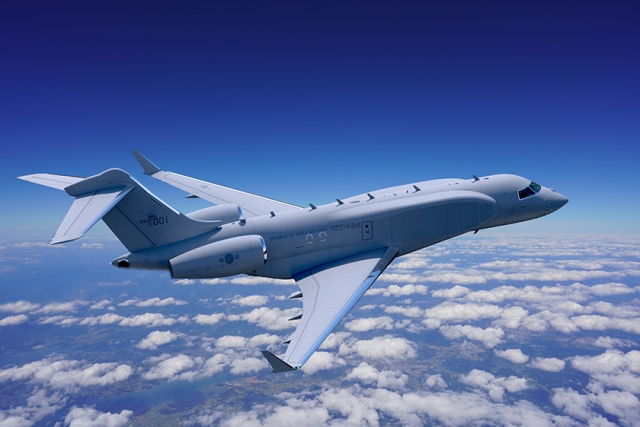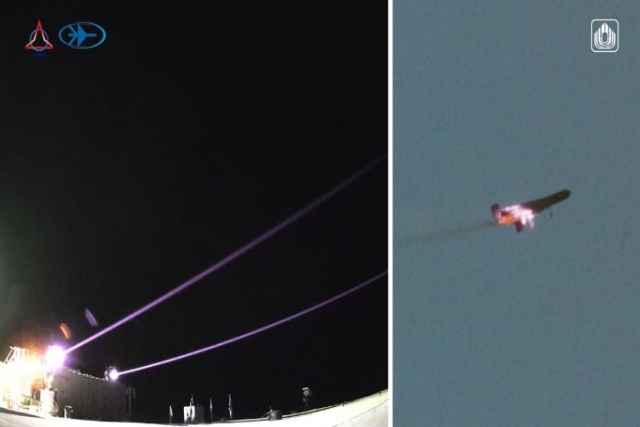Model Based Designing in the Aerospace Industry

Interview with Dr. Jon Friedman (Industry Marketing Manager, Mathworks)
Defenseworld.net interviewed Dr. Jon Friedman, Industry marketing manager of Mathworks. Mathworks is a provider of software for technical computing and model based design. Dr. Jon spoke about products for aerospace industry including MATLAB and Simulink which is a platform for model based designing.
DW : What are your products in the aerospace industry?
Dr. Jon Friedman: MathWorks has two foundation products that are widely used in the aerospace industry as well as other industries like automotive. The first product is MATLAB and is a platform for technical computing. There are a number of toolboxes written in MATLAB including the Aerospace Toolbox, which includes standards-based environmental models for atmosphere, gravity, wind and magnetic fields and supports the import of aerodynamic coefficients from the U.S. Air Force Digital Data Compendium (Datcom). The second foundation product is Simulink, which is a platform for Model-Based Design. In Model-Based Design, engineers use executable models at the center of their designs rather than relying on traditional paper-based process where specifications are written in natural languages, such as English, and then interpreted by separate implementation teams.
DW : What gives your products an edge over their competitors?
Dr. Jon Friedman: Currently, engineers use a wide variety of adhoc, disconnected, and paper-based processes to meet their technical computing and design needs. MathWorks provides an integrated environment for technical computing as well as multi-domain design needed to meet the challenge of modern aircraft design. In technical computing, engineers perform typical tasks such as data analysis and visualization, test data and signal creation/synthesis, algorithm development/synthesis, and algorithm testing/analysis. Often these tasks are done in several different environments and the output of each task needs to be entered by hand into the next environment. MATLAB provides a seamless environment for technical computing. For example, engineers developing sensors to capture images need to characterize and calibrate the sensor before they can create the algorithms that use the images for intelligence, surveillance, or reconnaissance work. To accomplish this task, they collect and analyze data from the sensor. Then from the data, they build a mathematical model of the sensor’s dynamics. Using this model, the engineers can then determine the optimal calibration for the sensor. To meet the challenge of developing advanced flight controls, full authority digital engine controls (FADEC) or signal processing algorithms, engineers need a design environment that allows them to move from reliance on physical prototypes and textual specifications, which are expensive and error-prone. Using Simulink and Model-Based Design, engineers create multi-domain system models that serve as an executable specification throughout development. These models allow engineers to explore the design space and verify performance at both the system-level and component-level. Then the design models can be used to automatically generate code, and the test vectors created to verify the design model can be reused on the code. In addition to the products offered by MathWorks, we have local direct offices in many countries, including a full office in Bangalore, India with application and support engineers available to help our customers.
DW : In general, in comparison to other products, what advantages your products have in aerospace industry?
Dr. Jon Friedman: One of the main goals of the aerospace industry is to achieve the seemingly difficult paradox of faster and more cost-efficient development with higher quality. To meet this challenge, the industry is moving away from the paper and physical prototype design processes and towards virtual prototyping and automatic generation of code. By using, elaborating and reusing models throughout a development cycle, engineers are able to develop complex algorithms, test and verify that performance requirements are met before the first line of code is created or prototype hardware is purchased. Using the models, engineers can identify and fix errors when they are introduced rather than waiting for a testing phase at the end of the traditional process. Using MATLAB and Simulink for Model-Based Design, aerospace engineers are able to continuously test and verify their designs and be efficient in their use of prototypes to test for integration issues rather than algorithm errors.
DW : How the execution of model based design is helping in the aerospace industry?
Dr. Jon Friedman: In the development of complex systems, engineers often focus on a specific domain, such as controls or communications algorithm design, or software programming. The final product from these disparate groups must meet system level requirements. However, often in the past, these groups have developed their designs in completely different domain-specific environments. As a result, there are many opportunities for designs to diverge and for the system to not meet the program requirements. Using Model-Based Design and MATLAB and Simulink, engineers are able to collaborate early in the development cycle and to reuse models in different stages of design. As a result, the system design is often optimized for functionality and performance and meets time and budget requirements as well. This is because early-stage design iterations are delivered more quickly and less expensively than those made after code has been completed or prototypes purchased.
DW : Are any of your products already being used by any Indian firm/company?
Dr. Jon Friedman: Yes, the products are being used widely in India, in many companies throughout the aerospace industry, automotive and other industries. A list of global companies is highlighted in our website.
DW : Who are or who can be your prime clients in the Indian Aerospace industry?
Dr. Jon Friedman: Our primary customers are the engineers in aerospace industry whether they are in government labs, private or commercial companies or small engineering activity companies. MathWorks supports engineers across the globe in meeting the demands of their jobs.
DW : What are the roadblocks that may be encountered using modeling and simulation in aerospace industry?
Dr. Jon Friedman: The primary roadblock is that change, of any kind, is difficult and for many in the aerospace industry, moving to a model-centric process is a significant change from their traditional development process. However, as we’ve discussed in this interview, it is no longer practical or possible to divide designs up among various domain specific engineering teams, have them develop paper-based specifications that cannot execute, and be satisfied with the expense of the iterative design process. As a result, even though many engineers have grown up in traditional developing environment writing code by hand or building expensive prototypes to test design ideas, the pressure to meet growing customer requirements serves as a catalyst for change. The other change-inducing factor for those companies and engineers still working in a traditional paper-based process is that their competitors are adopting Model-Based Design. Model-Based Design is fast becoming more of an industry standard and any organization that intends to retain its competitive edge has to adopt this process. This can be seen by the recent publication of modeling standards from NASA (http://www.mathworks.in/aerospace-defense/standards/nasa.html) as well as Model-Based Design workflows to support compliance with DO-178B (http://www.mathworks.in/aerospace-defense/standards/nasa.html) and DO-254(http://www.mathworks.in/aerospace-defense/standards/do-254.html).
DW : What scope for improvement is there in the current modeling software?
Dr. Jon Friedman: There are many active areas of research and development for modeling software. One example would be the addition of formal analysis methods to develop test vectors from the model, as well as to prove that certain functionality is either guaranteed to occur or that it will never occur. For example, modern aircrafts are equipped with thrust reversers that redirect the thrust of the engine to help slow a plane down after it has landed. Clearly, one never wants this configuration to occur while a plane is in flight. Thus, the question an algorithm engineer needs to answer is whether or not there is a path in the control algorithm that would allow for the thrust reverse to deploy while the aircraft is airborne. Applying formal methods to the algorithm models, engineers can have the tool mathematically determine whether or not there is a condition in the algorithm that would induce such a condition, and generate a test vector to put the algorithm into the state if possible. Another area of active work is in the physical modeling domain. As we’ve discussed, it is important for engineers of many different domains – mechanical, electrical, hydraulic and others to be able to work in a common system-level environment to ensure that the final design meets system level performance requirements. To support this work, MathWorks has a multi-domain modeling language called Simscape that allows engineers to define the physical properties of different components and then add those components to the system level simulation model.
DW : What diverse testing methods do you use for developing software or you offer to customers?
Dr. Jon Friedman: We offer two different methodologies; one is verifying the quality of software before it is run or compiled. In order to do this, our customers use Polyspace. Polyspace analyses the C, C++ or Ada code, whether it is hand-written or automatically generated, and it can prove the absence of certain class of runtime errors before the code is compiled and run. This step helps engineers to assess the quality of their product before it goes to compilation. The other methodology is Model-Based Design, where engineers create executable models of their algorithms and simulate the overall environment to test their designs before implementation in code.










